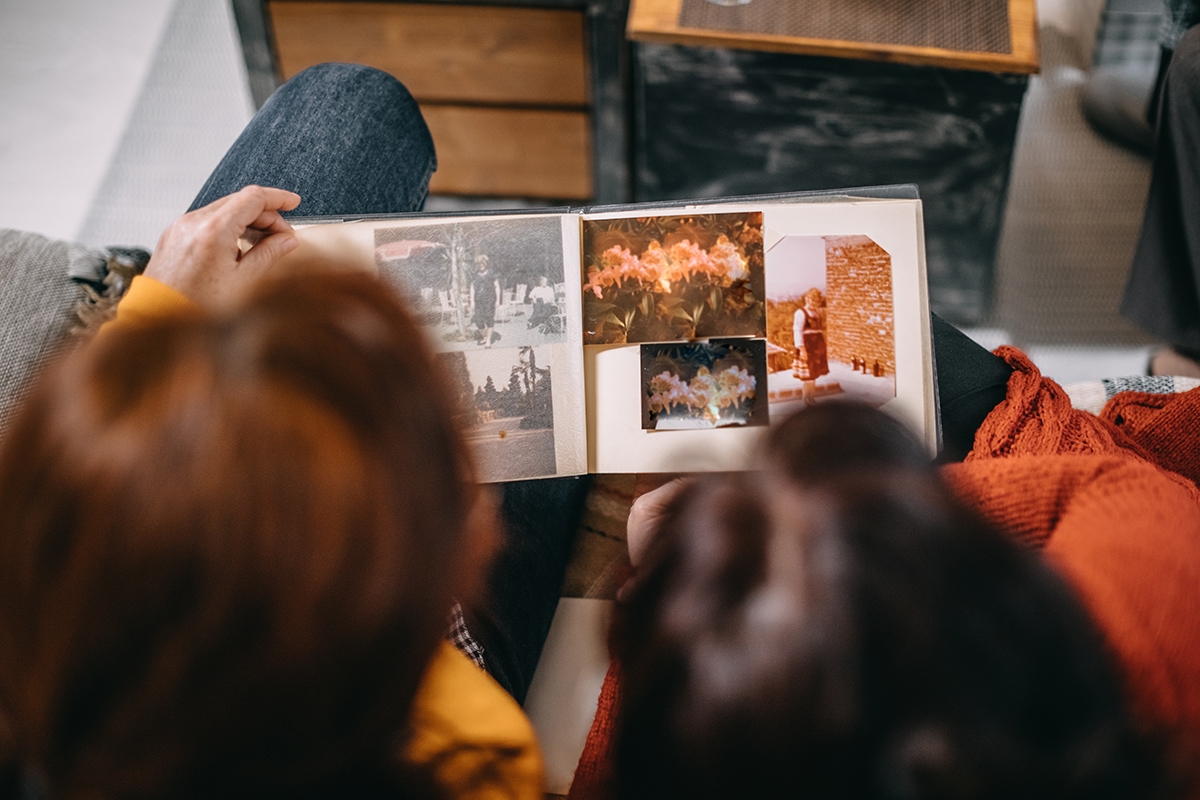At the bottom of the coat rack at my parents’ house — which has been my family’s pandemic residence — is a pile of large seashells and starfish. My kids know that these treasures belonged to Bubbe and Pop, and that they are “just for looking” and not playing. They haven’t been disturbed since Bubbe arranged them decades ago at her split-level home in New Jersey — after she died, this staple of her home came to my parents’ house.
While my children never met Bubbe and Pop, my paternal grandparents, they are named after them. What’s more, they have learned much about them, through our family stories, their belongings, photos of them and popular dishes, including Bubbe’s brisket (a family Rosh Hashanah favorite which I have unfortunately yet to master).
The upcoming holiday season, especially Rosh Hashanah and Yom Kippur, often brings up memories of family members who have died. We may miss sitting next to them in the synagogue or spending Rosh Hashanah meals and Yom Kippur break fast in their presence. I used to always go shoe shopping with my bubbe before Rosh Hashanah; we’d head to the mall near her home so I could be fitted for new patent-leather shoes for shul, since I’d always outgrow my pair from the year before. We would even get a special “Bubbe parking spot” — she always had a knack for finding a spot close to the entrance! On Rosh Hashanah, Bubbe and I would walk to shul together; along the way, I would scuff the soles of my new shoes along on the pavement.
On Yom Kippur and a couple other holidays throughout the year (Shemini Atzeret, the last day of Passover and the second day of Shavuot), there is a traditional memorial service called Yizkor, which is the Hebrew word for “remember.” Inside the synagogue, or on Zoom, the Yizkor service enables us to spend some time recalling and honoring loved ones who died, as well as those who perished in the Holocaust and martyrs throughout Jewish history.
Yom Kippur, of course, is a somber holiday, and it’s often difficult for kids to connect with its rituals and customs. Many clergy and educators share ways to make Yom Kippur meaningful for kids — from activities to understand the meaning of “being sorry,” to encouraging kids to skip desserts on this fast day, to wearing sneakers instead of dress shoes (if our kids remember what dress shoes are!).
As a rabbi, I’d like to add one more ritual to the mix: making a family Yizkor moment. Yizkor is an important service, in which we recognize that even though the lives of loved ones have ended, their love is infinite. Passing traditions “m’dor l’dor,” — from generation to generation — is a major component of what we do as a Jewish community. A family Yizkor moment enables all generations to honor those that came before them — kids included! While we can no longer visit with or Facetime with relatives who have died, we can still continue to be inspired by their memories.
Leading up to Yom Kippur, or during the holiday itself, I encourage you to go on a family scavenger hunt in your home to find items that belonged to relatives who have died. (Also, I’d like to suggest using the word “died” with your children — versus a euphemism like “passed on” — to show that death is a part of life. This helps normalize the word for our kids.)
As you locate mementoes in your home, you can ask one or more of the following prompts:
- What is the story behind this object?
- What value is prompted by this item?
- Who did it belong to?
- Where did _____ live?
- What was your favorite thing to do with _____?
- Did you spend vacations with _____?
- Do you have any special memories of _____from holiday celebrations?
- Is anyone in your family named for _____?
It might also be helpful to Facetime with relatives to ask them for more stories about your family member who died, or to learn more about an object’s history in your family.
If you do not have many physical objects in your home that belonged to relatives, you could also glean through old photo albums, photos on your walls, or on your phone.
During your family Yizkor moment, you might find yourself accessing memories that you haven’t recalled in a while. And, you may also find it special to share something with your family members about someone who was an important part of your life — before they were!
From the formal service in the synagogue — during which we recall those who have died through prayers and quiet reflections — to this family version, Yizkor has the power to make new memories on Yom Kippur. While some of our loved ones are no longer physically in our lives, memories of them are still very present for us in understanding ourselves and our heritage.
Even if our children don’t have direct memories of individuals who were important to us, a family Yizkor moment helps build connections to our ancestors in their own way. Bubbe and Pop’s dusty shells, for example, recently acquired new neighbors: yellow-and-purple-painted sparkly shells. Unbeknownst to me, my preschoolers felt the appropriate place for the shells that they decorated at summer camp would be to accompany those belonging to Bubbe and Pop. I was quite taken aback by this simple gesture. Bubbe would be kvelling to see that her great-grandchildren are just as organized as she — and they continue to keep her shells out of reach! These new shells, sitting atop a horse conch, are now also “just for looking!”








